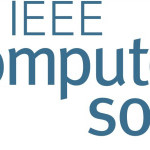- Sektör: Computer; Software
- Number of terms: 50628
- Number of blossaries: 0
- Company Profile:
Founded in 1946, the IEEE Computer Society is a professional organization for computing professionals. Based in Washington, DC, it's the largest of IEEE’s 38 societies organized under the IEEE Technical Activities Board. The IEEE Computer Society is dedicated to advancing the theory, practice, and ...
(1) The ability of a system or component to continue normal operation despite the presence of hardware or software faults.~(2) The number of faults a system or component can withstand before normal operation is impaired.~(3) Pertaining to the study of errors, faults, and failures, and of methods for enabling systems to continue normal operation in the presence of faults.
Industry:Computer; Software
(1) The ability of two or more systems or components to perform their required functions while sharing the same hardware or software environment.~(2) The ability of two or more systems or components to exchange information.
Industry:Computer; Software
(1) The computer on which a program is intended to execute.~(2) A computer being emulated by another computer.
Industry:Computer; Software
(1) The degree to which a system or component facilitates the establishment of test criteria and the performance of tests to determine whether those criteria have been met.~(2) The degree to which a requirement is stated in terms that permit establishment of test criteria and performance of tests to determine whether those criteria have been met.
Industry:Computer; Software
(1) The degree to which a system or component has a design or implementation that is difficult to understand and verify. Contrast with: simplicity.~(2) Pertaining to any of a set of structurebased metrics that measure the attribute in (1).
Industry:Computer; Software
(1) The degree to which a system or component is free from faults in its specification, design, and implementation.~(2) The degree to which software, documentation, or other items meet specified requirements.~(3) The degree to which software, documentation, or other items meet user needs and expectations, whether specified or not.
Industry:Computer; Software
(1) The difference between the loaded origin and the assembled origin of a computer program.~(2) A number that must be added to a relative address to determine the address of the storage location to be accessed. This number may be the difference defined inor another number defined in the program.
Industry:Computer; Software
(1) The difference between the loaded origin and the assembled origin of a computer program.~(2) A number that must be added to a relative address to determine the address of the storage location to be accessed. This number may be the difference defined inor another number defined in the program.
Industry:Computer; Software
(1) The ease with which a software system or component can be modified to correct faults, improve performance or other attributes, or adapt to a changed environment.~(2) The ease with which a hardware system or component can be retained in, or restored to, a state in which it can perform its required functions.
Industry:Computer; Software
(1) The process of analyzing design alternatives and defining the architecture, components, interfaces, and timing and sizing estimates for a system or component.~(2) The result of the process in (1).
Industry:Computer; Software
